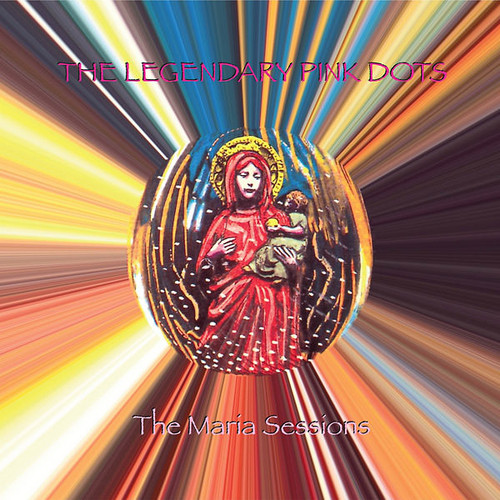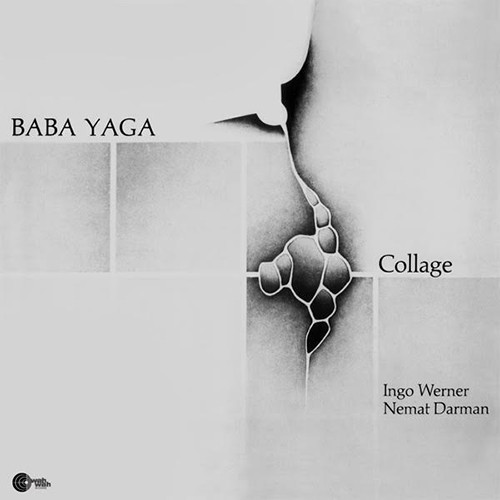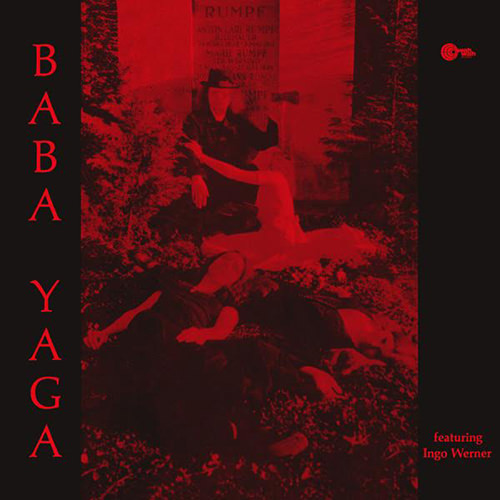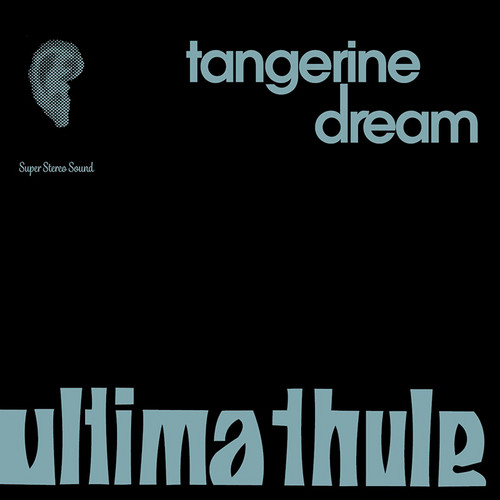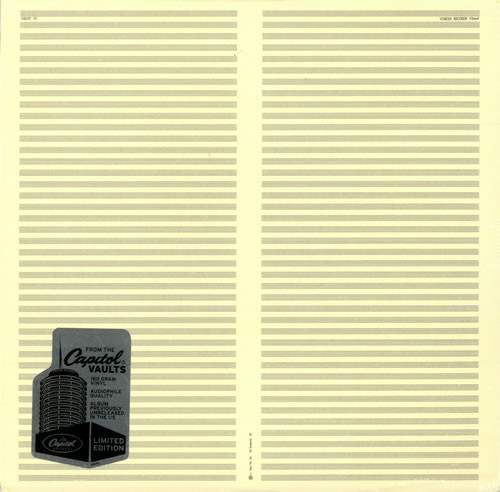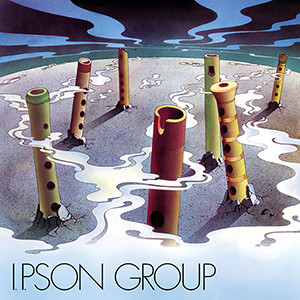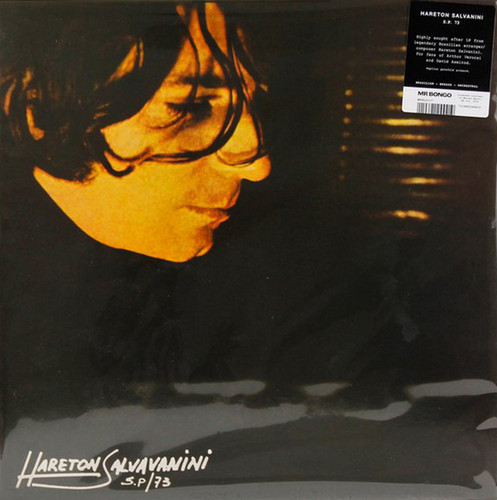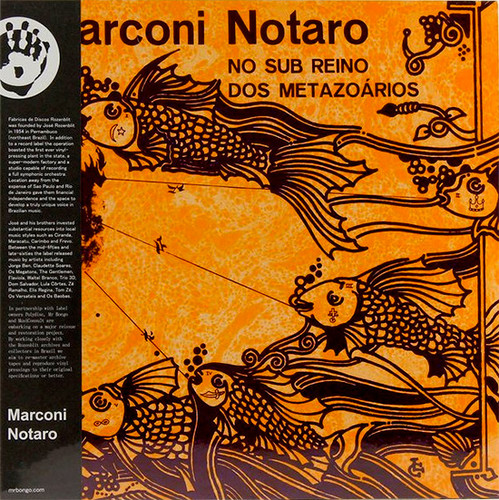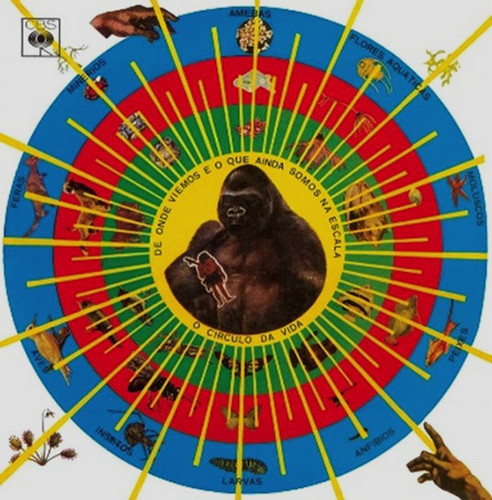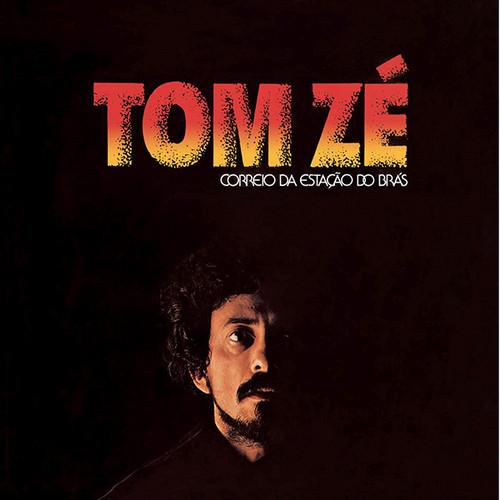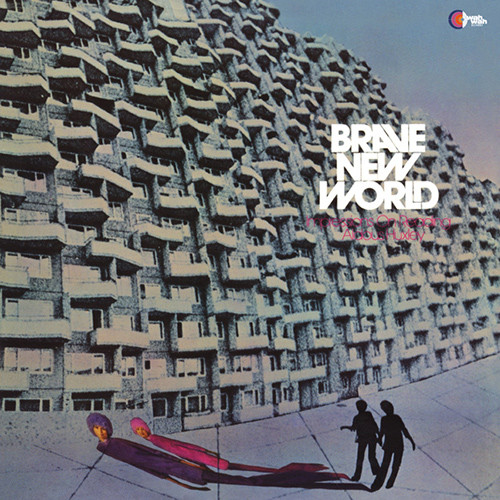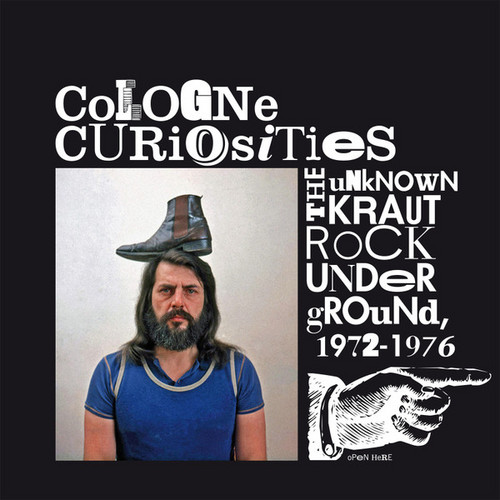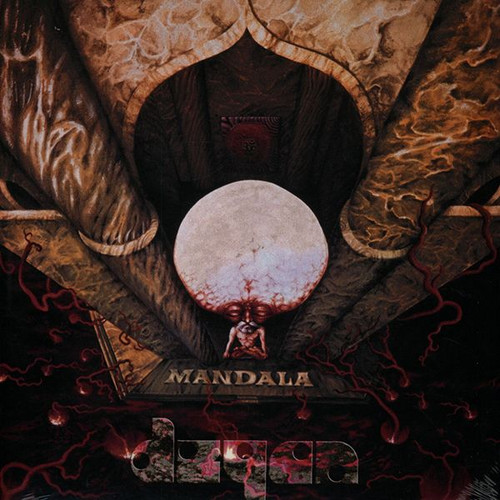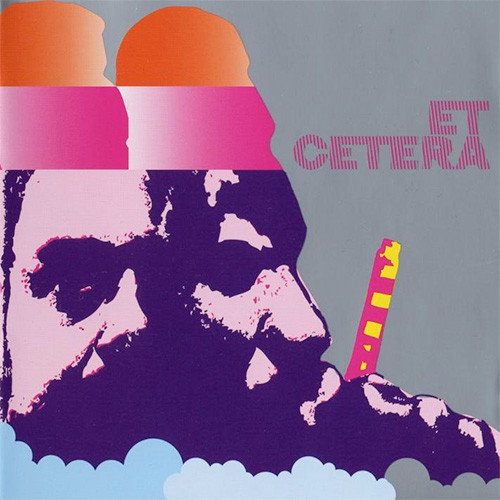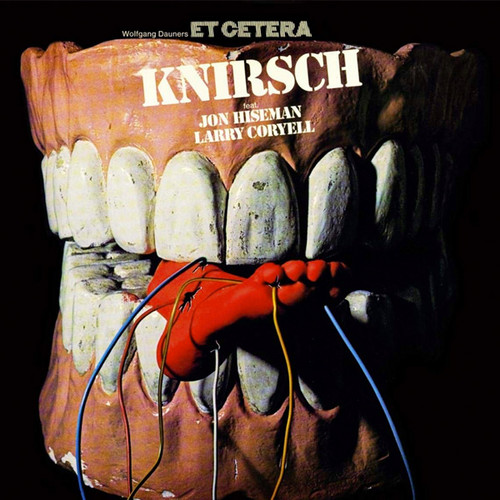Psych /
The Maria Sessions
Summer of 1990 was glorious. The Legendary Pink Dots entered the studio on a high as The Crushed Velvet Apocalypse seemed to be embraced by a broad audience. Our label Play It Again Sam had been generous with the budget for a new record, and there was a spirit of daring adventure firing up the band. For the first month we pretty much jammed... and Bob captured many of these sessions on a small tape recorder placed in the middle of the studio. Bob had dusted off his sitar, Niels unearthed his mon…
Collage
After his adventure with My Solid Ground, Ingo Werner formed Baba Yaga. Named after the Slavic folklore character his new adventure seemed to be more a solo project. On this second LP Ingo Werner chose to join forces with santur, sitar, tabla player Nemat Darman, an Iranian musician who also contributed congas, cymbal, gong, timpani, drums and vibraphone, and record the whole album as a duo. Werner would play EMS, Davoli and Solina-string synthesizer, clavinet, electric piano and grand piano, be…
Featuring Ingo Werner
After his adventure with My Solid Ground, Ingo Werner formed Baba Yaga. Named after the Slavic folklore character his new adventure seemed to be more a solo project (he plays electric piano, piano, mellotron, synthesizer, organ, clavinet, bassoon and gong, besides being the composer of the music), but it is made with the cooperation of other musicians - most notably Bernd Weidmann who, in addition to singing and playing bass also contibuted with some lyrics. Other musicians in the recording are …
It Don't Bother Me
Bert Jansch recorded his second album in 1965, just after his self-titled debut earlier that same year. The sessions were a step-up from the intimate, field-recording setting of his first album, although still not labored over too much in the studio. 'I figured that the faster I put down the tracks, the faster I could get out of the place,' Jansch told NME, 'so I just ordered about a dozen bottles of wine, put the microphone in front of me and off I went, for three hours.' The lyrics of I…
Ultima Thule
A superb collection of rare early tracks from electronic pioneers Tangerine Dream! Features 2 tracks from the ’60s psych-rock band that preceded Tangerine Dream, The Ones, plus rare tracks from the early ’70s era of the band when they were at their most adventurous, composing epic pieces that clocked in at over 10 minutes each such as “”Asteroid Agenda”" and “”Overture. Amazing floating space cosmic psychedelia
Faust IV
Exact replica, officially reissued by EMI. 180 gram audiophile pressing with printed inner sleeve; digitally remastered from original tapes. This reissue was "researched, spearheaded and co-ordinated" by Tom Recchion who has supplied rare artwork for the inner sleeve -- and, in general, this is a state-of-the-art edition. The fourth and final album to be released during Faust's original lifespan, originally released by Virgin Records in 1973. "As an album, IV matches the band's trajectory: Jumbl…
I.P. Son Group
Appeared in 1975 on the legendary Ultima Spiaggia label during the mature stage of the Italian underground scene, the only album of the milanese band led by guitarist Marco Rossi looks like a experiment rather atypical of that period. The typical jazz sound of formations such Perigeo or Napoli Centrale, leave here considerable field for improvisation on suggestions of extra-eurepean ethnic flavor, enhanced by the masterful rhythmic section (without drums) curated by the African percussionists Ni…
S.P 73
Brazilian arranger and composer Hareton Salvanini was born in Bauru and grew up in Campinas. S.P 73 is his first LP – he worked tirelessly with his right man and brother, Ayrton, was a theatre director. The 'Hareton + Meta' EP was written and recorded for one of Ayrton’s productions – Hareton wrote the music, Ayrton the lyrics – which was given out at performances. S.P 73 was recorded with the full Campinas Teatro Municipal Orchestra, the same orchestra that that featured on ‘Hareton + Meta’ EP.…
Satwa
Written, recorded and released just as Brazil’s military dictatorship reached the climax of its long black arc, the one and only album by Satwa is a divinely subtle protest, often cited as Brazil’s first independent record. Formed after the return of Lula Côrtes and Lailson from their respective foreign excursions – the ‘Satwa’ project lasted only a year, perhaps due to their differing stripes. Lailson was from the verdant former Dutch colony of Pernambuco, while Côrtes hailed from the wild b…
No Sub Reino Dos Metazoários
**Lucky restock, few copies in, totally sold-out at source** Another incredibly original album from the Solar/Rozenblit catalogue, this features the fabulous trio of Lula Cortes, Marconi Notaro and Ramalho. With Lula Cortes at the controls, writing, playing and illustrating the album cover. Soon after recording the classic album ‘Satwa’ (MRBLP083), Lula was back in the same Recife studio with his friend, the cult poet and writer Marconi Notaro to lay down another equally magical album.This joyou…
Krishnanda
2012 reissue, long out of print. Krishnanda is an album in the truest sense of the word – a spiritual, experimental psychedelic Brazilian masterpiece from start to finish – Produced by the artist himself in the CBS studio with arrangements Joppa Lins (codenamed Pacheco Lins ) and the endorsement of Hélcio Milito (then in the position of Production Director of the label), Krishnanda is a pearl of MPB and features poetic lyrics mystical perspective under a different linguistic structure.The sound…
Correio Da Estação Do Brás
2012 reissue, long out of print. A fluid, low-key effort, with less of the challenging, music box melodies of his earlier efforts. This is a record which eases its way past your ears (and I mean that in a good way!) It’s not sappy or unchallenging, but it is a lot smoother and less overtly avant than the stuff David Byrne loves so much.” – slipcue.com
Tom Zé began his career together with Caetano Veloso, Gilberto Gil, Gal Costa, and Maria Bethânia. As a composer, he influenced Caetano and …
Estudando O Samba
This is one of Tom Ze's best albums ever – and it's monsterously hard to find. The record is a fantastic blend of post-Tropicalia styles – and it features some strange arrangements that perfectly illustrated Ze's insane approach to songwriting. As with much of Ze's music, the actual sound is incredibly hard to describe – and the album bristles with imagination and creative fire. Documenting Zé’s most fertile and creative period, this album documents his kaleidoscopic experiments in the be…
Todos Os Olhos
2014 Reissue. Long-awaited legit (and High Quality) Brazilian reissue of this collectible avant madness LP from 1973 from one of the most influential artist in the Tropicália movement of 1960s Brazil. The joke with this album is that the album art -- which looks like an eyeball -- is actually a photo of a marble shoved up someone's anus... a little jab at the Brazilian dictatorship's office of censorship, which apparently didn't recognize a mirror when they saw one. Tom Ze's nutty side comes dan…
Impressions On Reading Aldous Huxley
Conceived as a studio project and conceptually inspired by the world of sci-fi novelist Aldous Huxley, Brave New World was created by Reinhart Firchow (recorders, flutes, ocarina, Stylophone, percussion, vocals), John O'Brien-Docker (guitars, organ, percussion, vocals, wind chimes) and Herb Geller (flutes, cor anglais, saxophones, organ). They where aided by Dicky Tarrach (drums, percussion), Lucas Lindholm (bass, bass fiddle, organ, piano) and Esther Daniels (voice). Irishman John O'Brien-Docke…
Cologne Curiosities:The Unknown Krautrock Underground, 1972-1976
“Cologne Curiosities” collects, for the first time on vinyl, all the otherwise unpublished/un-reissued material that firstly appeared on the three "Unknown Deutschland - The Krautrock Archive" CDs released on Virgin during 1996. These CD only releases were originally compiled by Trevor Manwaring (Paratactile, Impetus, Virgin, Harmonia Mundi) from tapes supplied to him by Toby Robinson. Toby - aka The Mad Twiddler, aka Genius P. Orridge - is well-known to Krautrock collectors as one of a number …
Mandala
Founded by multi-instrumentalist and composer Reinhard Karwatky in late 1971, Dzyan were an ethnic-inspired progressive jazz-rock band from southern Germany, Frankfurt Rhine-Main Area. 'Headquarters' was based in the county town Gro§-Gerau, near Frankfurt/Main; the domicile of Karwatky. The group consisted of Jochen Leuschner (vocals/percussion), Reinhard Karwatky (bass/sounds), Gerd "Bock" Ehrmann (tenor sax), Harry KrŠmer (guitars) and Ludwig Braum (drums/percussion).Dzyan recorded 3 albums be…
Et Cetera 1971
This special limited edition contains the original Et Cetera's eponymous "silver cover" album originally released in 1971 on Global Records and another complete LP of recordings from the same recording session. This is an extraordinary album of weirdly trippy fusion that rides somewhere between instrumental Amon Duul II, Embryo and Dauners own earlier classic "Output". Full of ethnic (Arabic and Indian) spice with lots of the ethnic colour added by legendary guitar and sitar (et. al.) player Si…
Knirsch
The first ever vinyl reissue of Wolfgang Dauner's Et Cetera's legendary production with Colosseum drummer Jon Hiseman and jazz rock guitar player Larry Coryell. This is one of the best German jazz rock albums of all time! This edition comes with remastered sound, reproduced artwork, and a 4-sided LP-cover-sized insert offering a lot of information plus rare photos.Knirsch is pianist/keyboardist Wolfgang Dauner’s 1972 follow-up to the eclectic free-jazz/rock improv collective Et Cetera, which was…
Rischka's Soul
Vinyl reissue of Dauner's famous release 'Rischka's Soul'! Recorded in November, 1969 and first released as a so called private pressing the recordings had a second release nearly three years later on famous German label Brain (1016, 1972). Dauner with his strong sidemen Sigi Schwab, guitar and Eberhard Weber, bass and cello with two drummers (Braceful and Wittich) played cool jazz fusion with fluiding organ play from Dauner, sometimes heavy, sometimes dreamy and psychedelic guitar eruptions fro…
